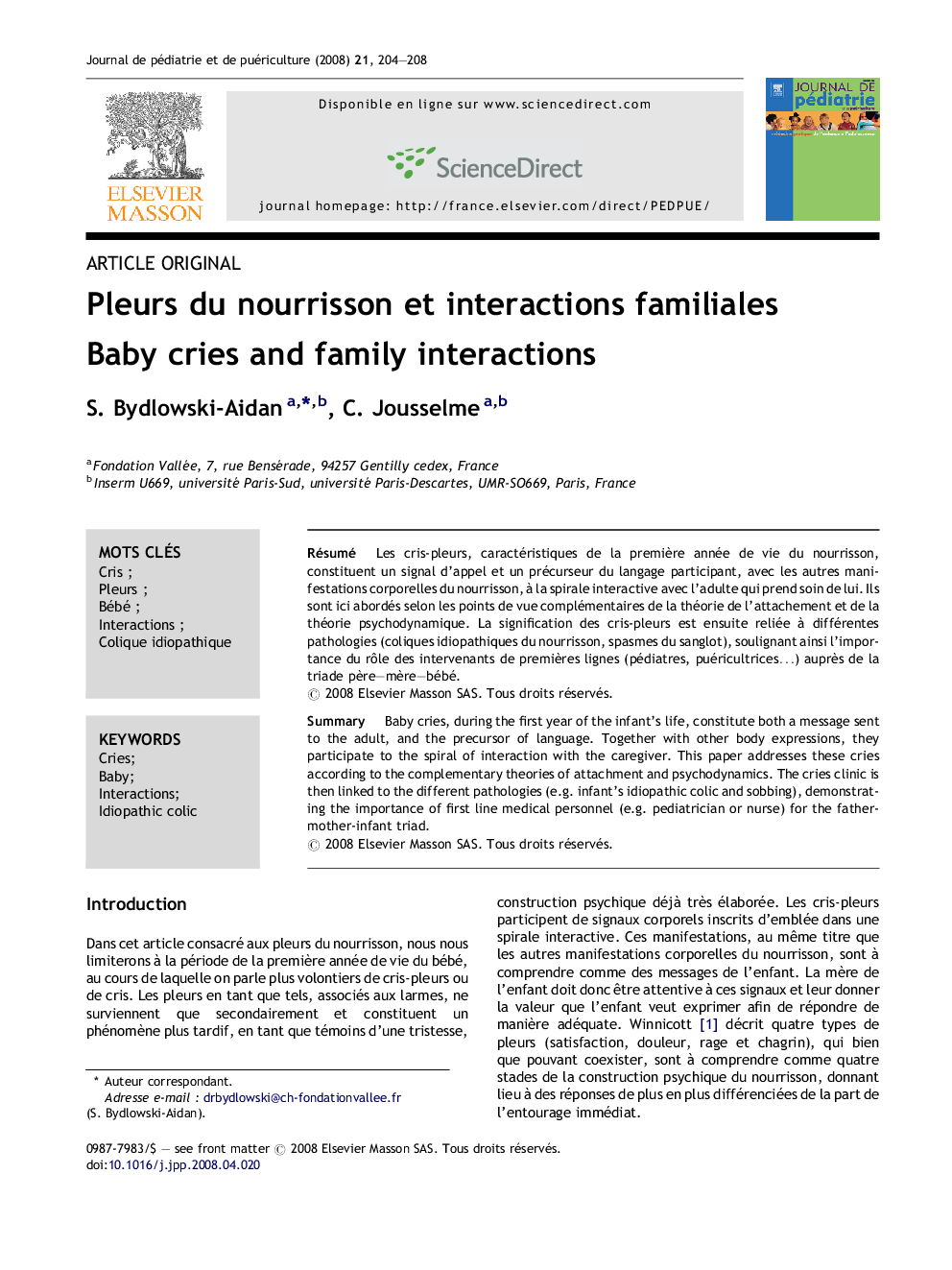| Article ID | Journal | Published Year | Pages | File Type |
|---|---|---|---|---|
| 4169883 | Journal de Pédiatrie et de Puériculture | 2008 | 5 Pages |
RésuméLes cris-pleurs, caractéristiques de la première année de vie du nourrisson, constituent un signal d’appel et un précurseur du langage participant, avec les autres manifestations corporelles du nourrisson, à la spirale interactive avec l’adulte qui prend soin de lui. Ils sont ici abordés selon les points de vue complémentaires de la théorie de l’attachement et de la théorie psychodynamique. La signification des cris-pleurs est ensuite reliée à différentes pathologies (coliques idiopathiques du nourrisson, spasmes du sanglot), soulignant ainsi l’importance du rôle des intervenants de premières lignes (pédiatres, puéricultrices…) auprès de la triade père–mère–bébé.
SummaryBaby cries, during the first year of the infant's life, constitute both a message sent to the adult, and the precursor of language. Together with other body expressions, they participate to the spiral of interaction with the caregiver. This paper addresses these cries according to the complementary theories of attachment and psychodynamics. The cries clinic is then linked to the different pathologies (e.g. infant's idiopathic colic and sobbing), demonstrating the importance of first line medical personnel (e.g. pediatrician or nurse) for the father-mother-infant triad.
